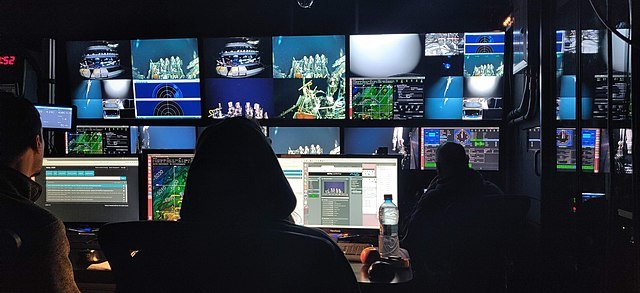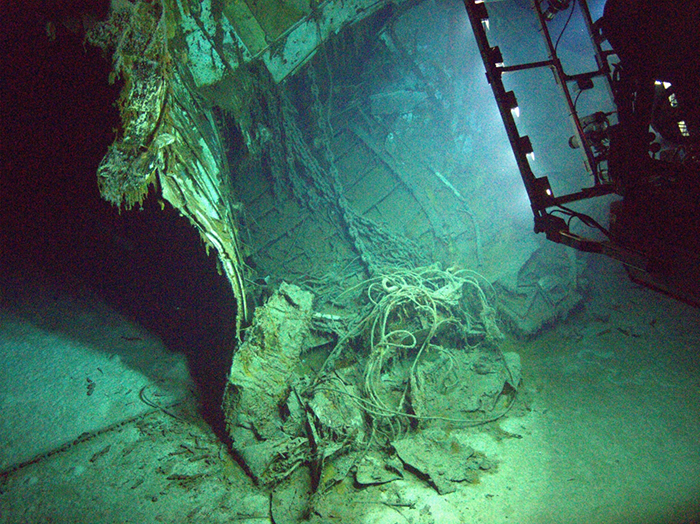The Role of Subsea Remote Operations in Improving Safety & Reducing Costs
The offshore industry is increasingly looking to remote operations as a means to enhance safety. The exploration and utilization of subsea environments have become critical for various industries, such as oil and gas, marine biology, and environmental monitoring. These activities often require visual inspection, data collection, and maintenance operations in challenging underwater conditions. However, conducting such imaging tasks in hazardous and remote locations can be expensive and risky. This is where subsea remote operations come into play, enabling imaging and data collection from a distance. In this article, we will explore the role of subsea remote operations in reducing costs and improving safety while conducting subsea imaging.
Photo Credit: Wünderbrot ROV Jason Van
What Are Subsea Remote Operations?
Subsea remote operations refer to the use of technology and robotics to perform tasks and operations in underwater environments without the direct physical presence of humans. These operations can include various activities such as imaging, inspection, maintenance, and data collection. Key components of subsea remote operations include remotely operated vehicles (ROVs), autonomous underwater vehicles (AUVs), advanced sensors and cameras, video streaming, and audio communications.
As industries transition toward remote operations, it's essential to acknowledge that each organization finds itself at a unique point along this transformative journey, with varying remote operational needs. For instance, some organizations may still rely on traditional inspection methods but have incorporated live real-time streaming to keep stakeholders and clients informed while they remain onshore. In contrast, other organizations have seamlessly adapted to full remote operations, leveraging advanced technologies to redefine the way they conduct their business.
How do Remote Operations Improve Safety?
Remote operations in offshore energy can significantly improve safety in various ways:
Reduced Exposure to Hazardous Environment
By eliminating or minimizing the need for personnel to work in challenging and hazardous subsea environments, remote operations significantly reduce the risk of accidents and injuries.
Minimized Human Error
Human error is a common cause of accidents and incidents in underwater operations. Subsea remote operations, driven by advanced control systems, offer precision and consistency in executing tasks, reducing the likelihood of errors that can lead to safety issues.
Improved Response to Emergencies
Subsea remote operations provide real-time monitoring capabilities, enabling immediate responses to emerging issues. In cases of equipment failure or emergencies like pipeline leaks, remotely operated vehicles (ROVs) equipped with specialized sensors can swiftly assess and address the situation, preventing potential disasters and minimizing risks to human life.
Enhanced Data Collection
Subsea remote imaging solutions, often integrated into remote operations, provide high-definition visual data for inspections. This data helps offshore professionals detect potential issues early, allowing them to address them before they escalate into major problems. Early detection reduces the risk of accidents and environmental damage.
Precision and Maneuverability
Modern ROVs and AUVs used in remote operations are designed to be highly maneuverable and precise. They can access tight and intricate spaces, conduct tasks with precision, and navigate complex underwater structures, reducing the likelihood of accidents and damage to assets.
Remote Collaboration with Stakeholders
Remote operations enable collaboration with stakeholders located anywhere in the world. This approach ensures that the most qualified individuals can participate in decision-making and troubleshooting, reducing the risk of errors and enhancing safety.
Safety in Extreme Conditions
Subsea remote operations are particularly beneficial in extreme conditions, such as deep-sea exploration or under ice-covered areas, where human intervention can be especially dangerous. By deploying advanced technologies in these scenarios, operators can minimize the risks associated with working in these challenging environments.
Environmental Responsibility
Enhanced safety often goes hand in hand with environmental responsibility. Subsea remote operations can help prevent oil spills and other environmental disasters by allowing quick and efficient responses to emergencies, minimizing the environmental impact of accidents.
Photo Credit: Oceaneering
How Do Remote Operations Help Reduce Costs?
Beyond enhancing safety, subsea remote operations offer significant cost-saving benefits to offshore energy professionals, including:
Minimized Travel and Logistics Costs
Traditional underwater inspections and maintenance tasks often required offshore professionals to travel to remote offshore locations. This involved significant logistical costs, including transportation, accommodation, and equipment mobilization. Subsea remote operations eliminate or drastically reduce the need for such travel, resulting in substantial cost savings. Operators can control remotely operated vehicles (ROVs) or autonomous underwater vehicles (AUVs) from onshore or centralized control centers, cutting down on travel expenses.
Energy Efficiency
Subsea remote operations often use energy-efficient technologies. By reducing the need for large support vessels and fuel consumption, operators can save on energy costs. Furthermore, the ability to optimize routes and schedules with real-time data reduces energy waste, leading to both cost savings and environmental benefits.
Remote Collaboration and Expertise
Remote operations allow for collaboration with experts located anywhere in the world. Instead of having on-site specialists for every task, offshore professionals can tap into remote expertise as needed. This approach can reduce personnel costs and ensure that the most qualified individuals are involved in decision-making and troubleshooting.
Real-Time Monitoring and Rapid Response
Remote operations provide real-time monitoring capabilities, allowing for immediate responses to emerging issues. This real-time assessment reduces downtime and the risk of catastrophic failures, which can result in substantial cost savings. For example, in the event of a pipeline leak, a quick response using ROVs equipped with leak detection sensors can prevent a costly environmental disaster.
Reduced Labor Costs
Manually conducting subsea inspections and maintenance tasks often involve specialized personnel. These skilled professionals come at a high labor cost, particularly when the work is conducted at great depths or in challenging environments. Subsea remote operations minimize the need for such skilled labor, as many tasks can be executed by remotely operated vehicles, leading to significant labor cost reductions.
Preventive Maintenance
Subsea remote imaging solutions enable proactive maintenance and early issue detection. By identifying potential problems before they escalate into major failures, operators can perform preventive maintenance. This not only extends the lifespan of subsea assets but also reduces the costs associated with emergency repairs or replacements.
Efficient Data Collection
Subsea remote imaging solutions provide detailed and accurate data, which helps operators make informed decisions. This efficient data collection eliminates the need for repeat inspections or data validation, saving time and resources. It also streamlines the decision-making process, reducing delays and associated costs.
Reduced Wear and Tear on Equipment
Human intervention in subsea operations can cause wear and tear on equipment and infrastructure. By using ROVs or AUVs for inspections and maintenance, the potential for equipment damage is significantly reduced. This extends the operational life of subsea assets and lowers the costs of frequent equipment replacements or repairs.
Lower Insurance Premiums
The reduced risk of accidents and equipment failures associated with subsea remote operations can lead to lower insurance premiums. Insurance companies often offer reduced rates for operators who demonstrate a commitment to safety and risk mitigation through the use of advanced technologies.
Elimination of Decommissioning Costs
When subsea assets reach the end of their operational life, decommissioning costs can be substantial. Subsea remote operations can assist in the safe and efficient decommissioning of these assets, reducing the associated costs. For instance, ROVs can be used to disconnect and recover equipment without the need for costly underwater demolitions or human divers.
Conclusion
Subsea remote operations have emerged as a transformative and multifaceted solution for the offshore industry, playing a pivotal role in both enhancing safety and reducing costs. By minimizing the need for human presence in hazardous underwater environments, these operations not only mitigate the risk of accidents and human errors but also enable rapid responses to emergencies, early issue detection, and precise, environmentally responsible actions. Moreover, they offer substantial cost-saving benefits by eliminating or reducing travel and logistics expenses, optimizing energy efficiency, enabling remote collaboration with experts, and promoting preventive maintenance. The efficient data collection, reduced equipment wear and tear, and potential for lower insurance premiums further contribute to substantial long-term savings. Overall, subsea remote operations have become a cornerstone of innovation in the offshore industry, fostering a safer, more cost-effective, and environmentally responsible approach to subsea imaging and operations.




